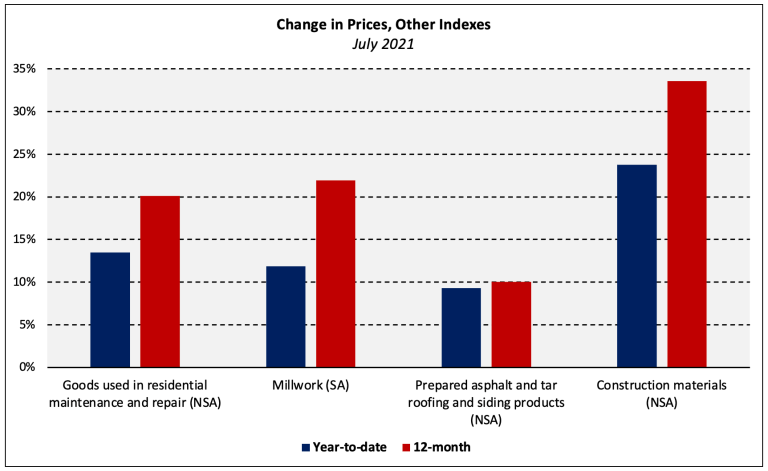Even though lumber prices have recently declined, the National Association of Home Builders (NAHB) says builders are facing some of the fastest increases of other building material costs in history. The latest Producer Price Index (PPI) from the Bureau of Labor Statistics (BLS) shows an 0.2 percent increase in the prices of goods used in residential construction (with the exception of food and energy costs) in July. Those costs had increased 3.0 percent in June.
David Logan posted in NAHB's Eye on Housing blog that the BLS index shows those building costs have declined only twice since December 2019 and have climbed by 19.4 percent over the past 12 months. As an aside, when food and energy are included, the index is up 22.3 percent year-over-year.
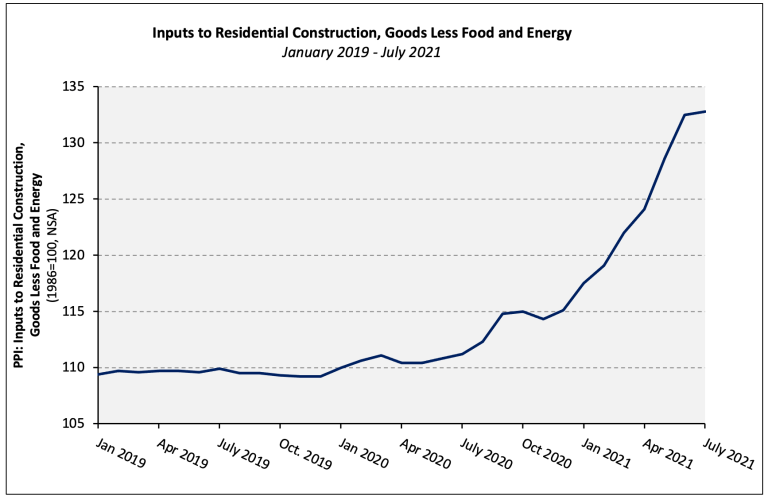
For the year-to-date (YTD), the index shows a 13 percent increase as compared with only 1.1 percent for the same period last year. The 2020 YTD figures was apparently not a COVID-19 induced aberration; Logan says the average change in the index for the same seven month period from 2015 through 2019 was 1.2 percent.
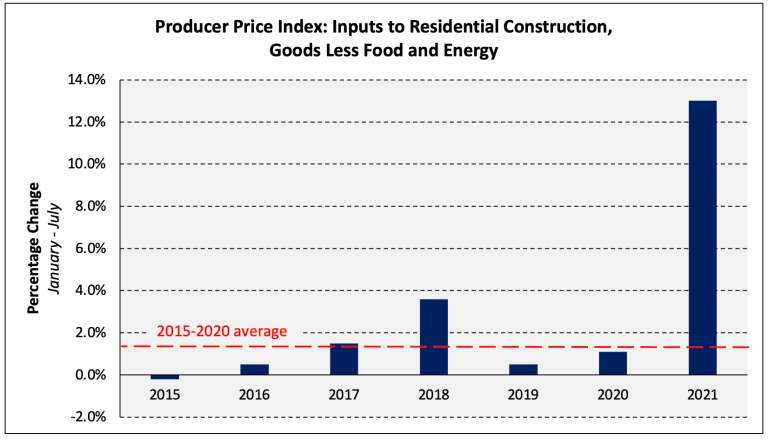
Prior to May, the PPI for steel products had accelerated each month for eight months. In fact, Logan says there were only three times in the 80 years ended in 2020 that steel mill prices increased by more than 10 percent in a single month. That has happened four times thus far in 2021. After the respite in May (with only a 2.4 percent increase) the climb resumed in June and July with gains of 6.2 percent and 10.8 percent, respectively.
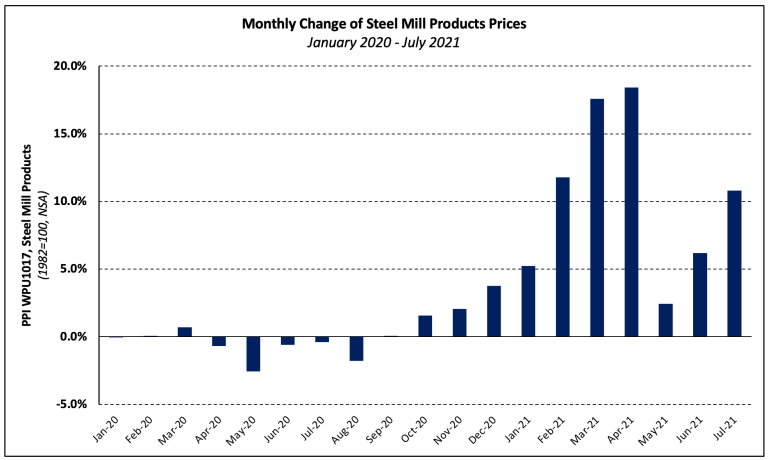
The increase in the price of lumber products has gotten most of the press, however the BLS says softwood prices fell 29.0 percent in July (seasonally adjusted), the largest monthly decline in records dating back to 1947 and nearly three times the previous record (-10.7 percent) in April 1980. Prices are still 71.9 percent higher than in January of last year and Logan says that the volatility of lumber prices is still a concern. It remains at an all-time high for a 12-month period.
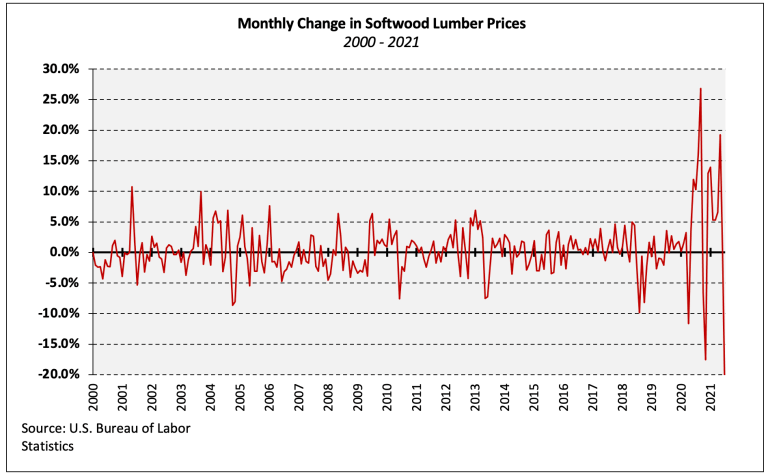
Prices for other products have also increased. Gypsum products were up 2.5 percent in July, 15.8 percent YTD and 21.7 percent (non-seasonally adjusted) over the previous 12 months, the largest such growth since July 2006.
Prices paid for ready-mix concrete were unchanged in July (seasonally adjusted) after increasing 1.1 percent in June. Some of those increases, however, have been problematic on a regional basis. Regional changes have tended to balance out month-to-month but price gains in the Northeast and West have far outpaced those in the Midwest and South over the past four years. Since July 2017, prices paid for ready-mix concrete have increased by roughly 20 percent in those two regions but only 9 percent in the Midwest and South.
Logan recaps changes in other building products in the chart below. He notes that the Construction Materials index is particularly salient as Congress nears agreement on an infrastructure package. It is more heavily weighted with products used in large amounts in building "traditional" infrastructure like roads, rail, and bridges and that could drive prices higher for all construction projects.
